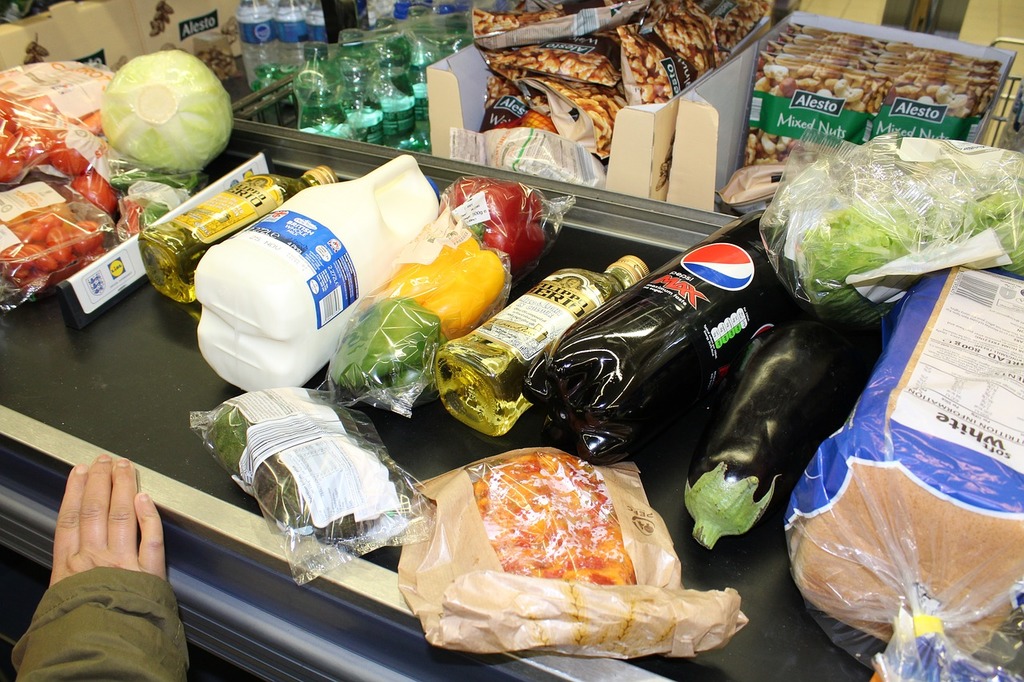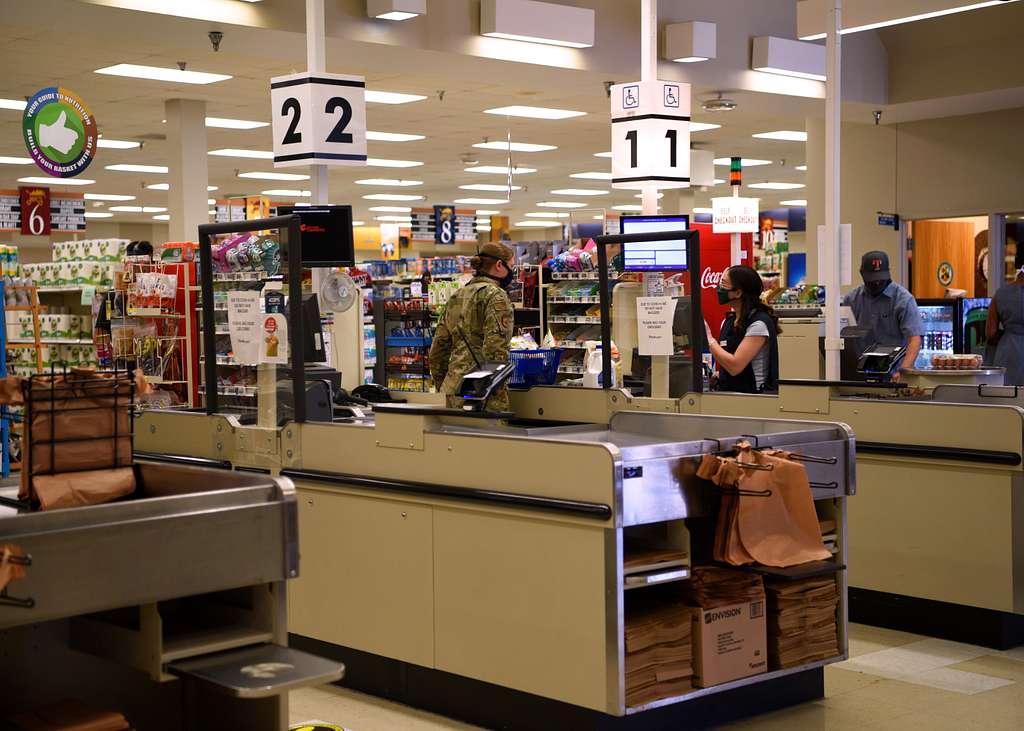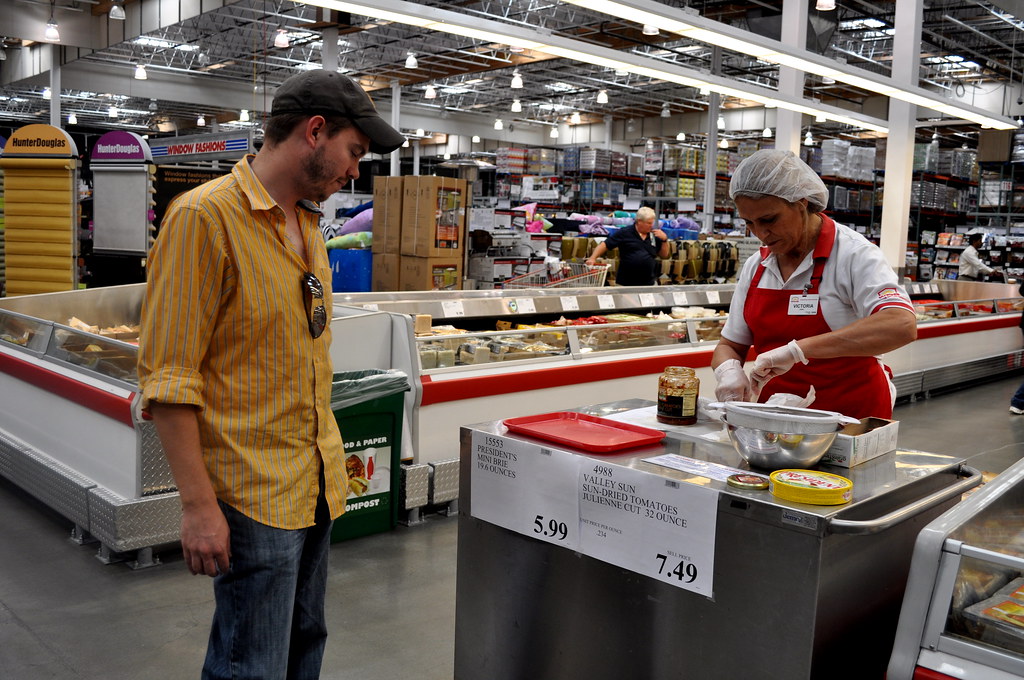If you’re a senior shopper, the price game is even sneakier at the grocery store. Between the calming music, the “buy one get one” traps, and that suspiciously seductive smell of baked goods near the entrance, grocery stores are basically playing 4D chess—on your dime.
They know what makes you tick (and what makes your joints ache). They bank on your routines, your love of a good deal, and yes, even your nostalgia. But here’s the thing: once you know the playbook, you can flip the script. So whether you’re shopping for one or restocking the freezer like it’s the apocalypse, here are 13 sneaky ways stores target seniors—and how to fight back like the savvy legend you are.
1. The Sensory Trap

Ever walked into a store and been greeted by the delightful aroma of freshly baked bread? That’s no coincidence. Stores use scents to create a welcoming atmosphere and stimulate appetite, encouraging shoppers to buy more. Chefs for Bon Appétit explains how sensory experiences are manipulated to influence purchasing decisions.
There’s even a term for it: “scent marketing.” Retailers literally pipe in smells—like vanilla near the bakery or citrus in the produce section—to alter your mood and trigger emotional spending. Seniors, who may already associate these smells with comfort or nostalgia, can be even more susceptible. That whiff of cookies might just make you buy a tub of dough you didn’t even know you needed.
Fight Back Tip: Be aware of these sensory tactics. If you’re shopping on an empty stomach, you’re more susceptible to impulse buys. Consider eating before shopping to reduce temptation. Bring a list—and maybe a mint to dull the cookie cravings.
2. The Eye-Level Trick

Ever notice how the most expensive items are conveniently placed right at eye level? That’s no accident. Grocery stores strategically position premium products where they’re most likely to be seen and grabbed, especially by seniors who may not want to bend or stretch too much. According to Forbes, this tactic is part of a broader strategy to drive sales through store layout psychology.
This “golden zone” isn’t just about convenience—it’s prime real estate that brands pay extra for. That’s right, companies actually shell out money to get their product into your line of sight. Seniors, with a bit less mobility and a bit more patience, become easy targets for this lazy-location logic. The stuff you should be buying—better value, same quality—is usually playing hide-and-seek at your ankles or above your hairline.
Fight Back Tip: Take a moment to scan the top and bottom shelves. That’s where the budget-friendly and generic options often reside. Don’t let the store’s layout dictate your choices—be a shelf explorer! Get low, stretch high, and claim your savings.
3. The Endcap Display Tactics

Those flashy displays at the end of aisles, known as endcaps, are designed to catch your eye with “deals” that aren’t always the best value. They often feature products the store wants to promote, not necessarily what you need. GoodRx notes that these placements are strategic, aiming to entice impulse buys.
And here’s the kicker: the items on endcaps are sometimes marked up, not down—because they seem like a “special.” What looks like a bargain might actually cost more per ounce or unit than the same product in a less glamorous location. Retailers bank on the assumption that you won’t check the fine print when it’s sitting there like a shiny object. Seniors are especially vulnerable during peak hours, when fatigue and sensory overload can cloud decision-making.
Fight Back Tip: Stick to your shopping list and be wary of endcap deals. Compare prices and check if the “deal” is truly a bargain or just clever marketing. Don’t let convenience hijack your budget. If it’s not on your list, it doesn’t need to be in your cart.
4. The False Illusion Of Savings

Stores often use signage with phrases like “Special Offer” or “Limited Time Deal” to create a sense of urgency. However, these deals aren’t always the best value. USC’s Master of Science in Applied Psychology highlights how such marketing strategies play on consumer psychology.
Bright colors, exclamation points, and giant price tags are all part of the illusion. Seniors may feel rushed or pressured to grab what looks like a steal before it “goes away,” even when the product is regularly that price. And let’s be real—how many times have you seen that “limited offer” still hanging around a month later? It’s not a fire sale, it’s a slow burn of your bank account.
Fight Back Tip: Don’t be swayed by flashy signs. Take the time to compare unit prices and assess whether the deal is genuine or just marketing hype. Use your phone’s calculator if you need to. Confidence is your coupon.
5. The Impulse Buy Zone

As you wait in line, you’re surrounded by small, tempting items—candy, magazines, gadgets—all strategically placed to encourage last-minute purchases. This tactic exploits the psychology of impulse buying, as noted by The Washington Post.
These are called “grab zone” items, and stores expect them to pad your total by 5–10% per trip. They’re targeting tired brains and short attention spans—which, let’s be honest, affect all of us by the time we hit checkout. For seniors, these zones can be especially overwhelming: tight spaces, long waits, and bright packaging are a recipe for distracted spending. And that $2.79 lint roller? You probably already have three.
Fight Back Tip: Stay focused at checkout. Remind yourself that these items are placed there to tempt you into unplanned purchases. Keep your eyes on your cart and your budget in check. If you really want it, walk back for it after paying—bet you won’t.
6. The Senior Discount Day With Strings Attached

Senior discount days sound great—until you realize they come with a tiny asterisk and a mile of fine print. It might only apply to certain departments. Or it might exclude sale items, which is basically everything worth buying. Even worse, some stores only honor the discount during awkward hours like Tuesday from 10:12 to 10:17 AM. It’s designed to feel like a gift but ends up being a strategic ploy to lure seniors in during low-traffic times.
Once you’re there, they’re banking on you doing a full shop anyway. By the time you discover that your favorite cereal isn’t eligible, you’re already halfway to checkout. And let’s be real, most folks don’t want to squabble over 5%. But you should! It’s your money. If they’re offering a senior discount, it should mean something—not just act like clickbait in coupon form.
Fight Back Tip: Ask for details upfront—what’s included, when it applies, and how much it really saves. Don’t let them hide the rules behind a smiling cashier and a neon sign. Own your status and shop on your terms.
7. The Intentionally Confusing Price Tags

One item says $2.50. The one next to it says 2 for $5. Another says 10 for $10 but in tiny letters: “must buy 10.” It’s a brain twister, and for seniors on a fixed income, that kind of mental gymnastics isn’t just annoying—it’s a setup. The pricing chaos is designed to short-circuit your comparison skills.
And let’s not forget the teeny-tiny unit price tucked away like it’s in witness protection. It’s not just confusing—it’s intentional. The more cognitive effort it takes to determine the best value, the more likely you are to just grab something and move on. That’s what the store is counting on.
Fight Back Tip: Don’t rush. Take your time to read the full label, and always check the unit price (even if you need to pull out your glasses). Buying in bulk or multi-packs isn’t always cheaper. Clarity beats convenience every time.
8. The Giant Cart Strategy

You walk in and grab a shopping cart the size of a Prius. It feels normal, right? But that massive cart is messing with your brain. Studies show people buy more when the cart is bigger—it makes what you’ve added seem like less. Seniors, who tend to shop more slowly and methodically, are easy prey for this oversized optical illusion.
You think, “Huh, I’ve only got a few things,” and then boom—$92 at checkout and you’re still out of eggs. The size of the cart has nothing to do with your needs and everything to do with maximizing your spend. Smaller baskets are often shoved to the side, or worse, not available at all. You didn’t notice? That’s the point.
Fight Back Tip: If you only need a few items, carry a basket (even if you have to ask for one). Or bring a foldable tote from home. Smaller space equals smarter shopping. Less is literally more.
9. The Temptation-Filled Store Layouts

Have you ever walked into a grocery store looking for one thing—milk, let’s say—and ended up on a pilgrimage past 14 aisles of temptation? That’s design, baby. Stores intentionally place essentials like dairy, bread, and eggs in the far corners. Why? So you walk the whole maze and “accidentally” toss in chips, cookies, and frozen shrimp you had no plans for.
For seniors who may have mobility limitations, it’s even more exhausting. And guess what? The fatigue leads to decision fatigue, which leads to spending fatigue. Meaning—you give up and grab whatever’s easiest (and priciest). That’s not just annoying—it’s sneaky.
Fight Back Tip: Know the layout. Go in with a list sorted by section so you can get in and out like a ninja. Or shop online for pickup—skip the maze altogether. Let them play checkers while you’re playing chess.
10. The Buy-One-Get-One Free Scams

BOGO sounds like a dream—buy one, get one free! But hold up. What if you only need one? Or worse, what if the first item is overpriced just to cover the “free” one? Seniors, trying to be frugal, may feel guilted into buying more than they want just to “get the deal.” Spoiler: it’s often not a deal at all.
You end up with extra items you don’t need, and half of it might go bad before you use it. That’s not saving—that’s losing strategically. It’s emotional manipulation wrapped in sale signage.
Fight Back Tip: Don’t buy more than you need just to get the second one free. Check if the discount applies to one item. If it doesn’t? Skip it. Free isn’t really free if you’re paying in waste.
11. The Music And Mood Lighting Master Plan

Ever notice the music in grocery stores? It’s not just for ambiance. The playlists are designed to slow you down and keep you wandering. Smooth jazz and golden oldies? That’s not just nostalgia—that’s strategy. The slower you move, the more time you spend… and the more you buy.
Pair that with soft lighting and warm tones, and you’ve basically entered a shopping trance. Seniors, especially, are more susceptible to mood-based marketing. You feel relaxed, your guard’s down, and suddenly you’re buying a bouquet of tulips and a gourmet cheese board. Been there.
Fight Back Tip: Make a playlist that pumps you up and use earbuds if safe to do so. Upbeat music speeds up your pace and keeps you focused. Or time yourself. In-and-out grocery missions are the new vibe.
12. The Fake “Healthy” Labels

That granola bar shouting “heart healthy!” may have more sugar than a candy bar. Grocery shelves are full of health halos—labels that make things sound good for you without any real proof. Seniors trying to eat better are often misled by packaging with leafy greens, vague health claims, or “doctor-recommended” nonsense. Spoiler alert: the doctor probably works in branding.
You might grab that cereal because it says “fiber-rich,” but not notice the sodium’s sky-high. Or the word “natural” (which means basically nothing). It’s marketing in a lab coat. And it’s costing you—money and trust.
Fight Back Tip: Flip the box. Read the nutrition facts, not the headlines. If the ingredient list reads like a science experiment, skip it. Real health doesn’t come in neon fonts.
13. The Free Samples That Lead To Full Carts

“Oh sure, I’ll try a little slice of that cheese.” Boom—you just joined the snack trap. Free samples may seem like harmless generosity, but they’re bait. Stores know that tasting creates a tiny sense of obligation. It’s human nature—someone gives you something, you feel like you should give back.
Even if you didn’t like the freebie, you might grab the full-size anyway. Multiply that by three or four stops at the demo stations, and suddenly you’re carrying fancy yogurt and salmon spread you’d never even looked at before. It’s not a gift—it’s a gentle nudge toward unplanned spending.
Fight Back Tip: If you’re hungry, have a snack before you shop. And remind yourself: sampling is fine, but it doesn’t mean you owe the cart space. Gratitude doesn’t require a purchase.
This article is for informational purposes only and should not be construed as financial advice. Consult a financial professional before making investment or other financial decisions. The author and publisher make no warranties of any kind.








